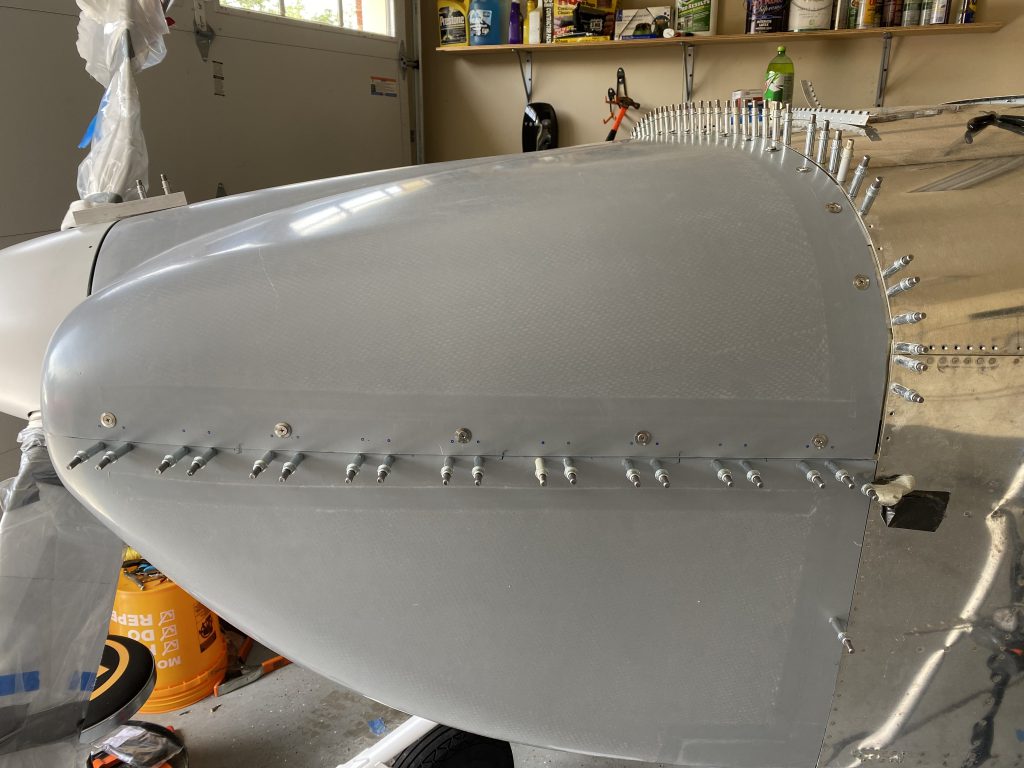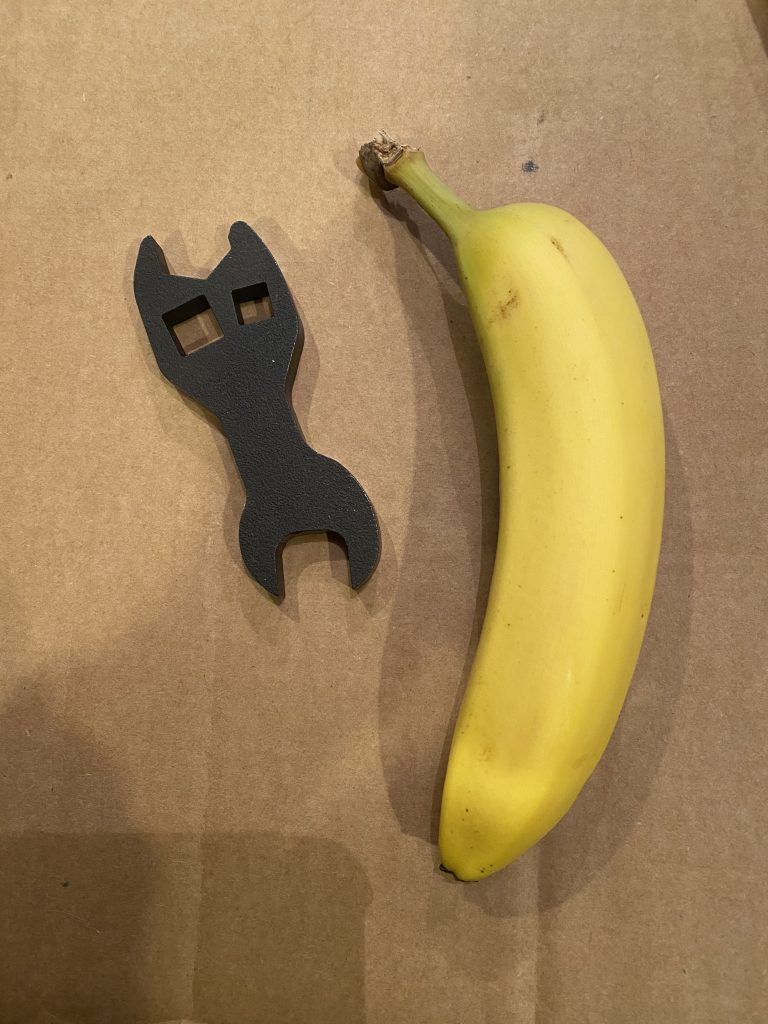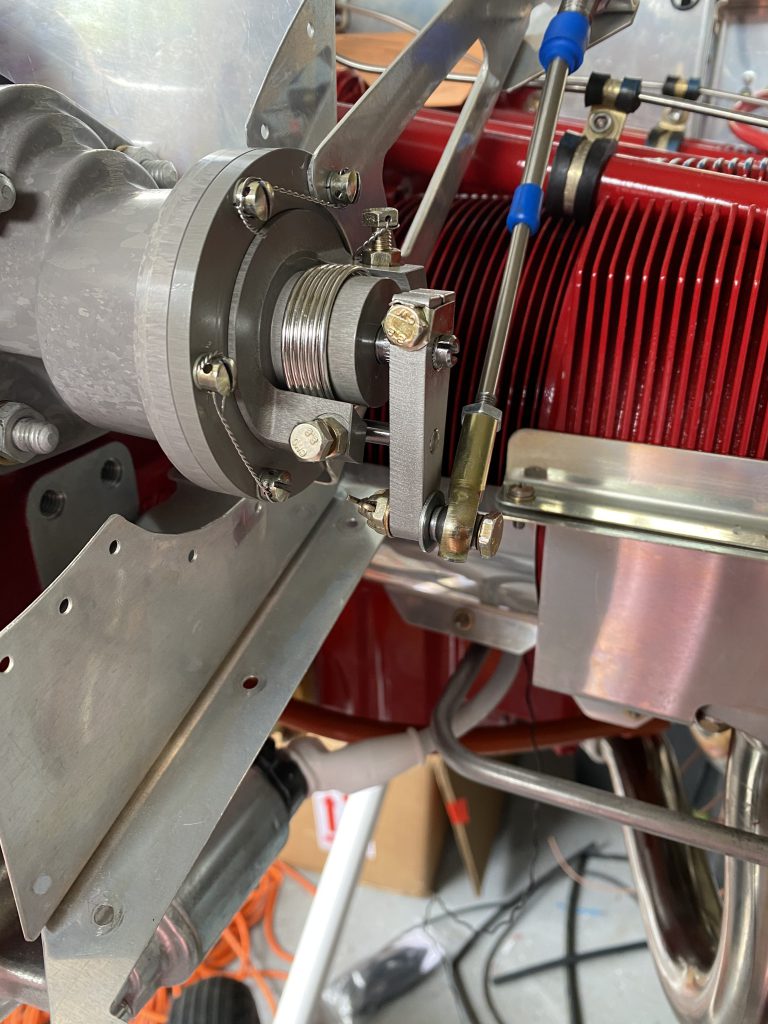The move to the airport will be tomorrow (Sunday). I decided to hire a towing company with a roll back truck to do the transport. The cost was reasonable ($150) and I thought it would be safer and easier to do it that way.
In the mean time we continue to work on small tasks like the air inlet ramps. We trimmed them to a specific shape and then glued them to the inside of the upper cowling using resin and flox. After they set up, we will use resin with micro-balloons to smooth all the edges to ensure the airflow into the engine compartment is as smooth as possible.


We also coated the inside of both cowlings with a generous amount of resin. This is supposed to make it easier to clean and easier to detect any leaks in the engine compartment.

We also worked on the fairing for the nose gear leg. Unfortunately, my first attempt at installing the hinge that closes the fairing around the gear leg was a bust. I will attempt to redo it soon.
Other miscellaneous tasks coming up: re-aligning the main gear to remove some of the toe in, installing the rubber seals for the engine baffles and finishing minor plumbing and wiring tasks in the engine compartment.
Hopefully, the wings will go on in the next week or so!
One other note: I started working on the registration paperwork this week. I had reserved the N Number several months ago. I mistakenly assumed the rest of the paper work would take a few hours. I was sadly mistaken. It looks like it could take 3 or 4 weeks to get through the process which could impact when I get it inspected.
16 hours (2 people x 8 hours).
































